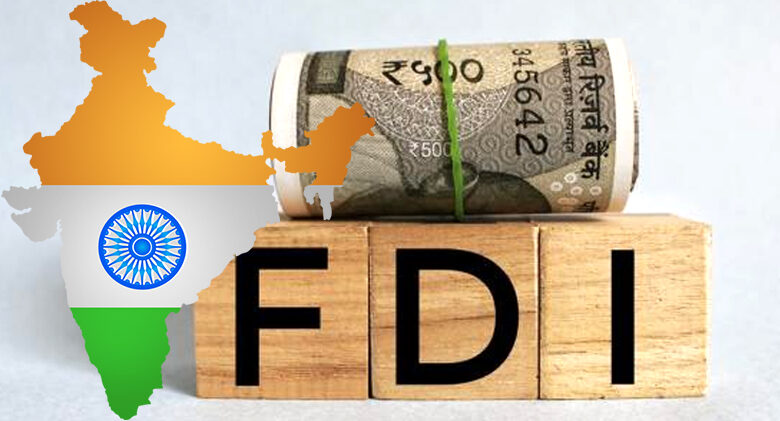100% FDI in Insurance: Opportunities and Challenges for India

The announcement of 100% Foreign Direct Investment (FDI) in the Indian insurance sector, made during the Union Budget 2025, marks a watershed moment for the industry. This reform, aimed at boosting capital inflows and fostering innovation, is expected to transform the insurance landscape in India. While the move presents significant opportunities, it also comes with challenges that need to be addressed to ensure sustainable growth. This article delves into the potential benefits and hurdles associated with this policy shift.
Opportunities Presented by 100% FDI in Insurance
The decision to allow full foreign ownership in the insurance sector has far-reaching implications for the industry, consumers, and the broader economy. Here are some of the key opportunities:
1. Increased Capital Inflows
One of the most immediate benefits of 100% FDI is the infusion of fresh capital into the sector. Insurance is a capital-intensive industry that requires substantial funds for underwriting risks, expanding operations, and adopting new technologies. By removing the cap on foreign ownership, India can attract significant investments from global insurance giants. This capital can be used to:
- Strengthen balance sheets.
- Expand distribution networks.
- Invest in emerging technologies like artificial intelligence (AI) and blockchain.
According to reports, since the introduction of FDI in insurance in 2000, the sector has already attracted over ₹82,847 crore in investments as of September 2024. The new policy is expected to accelerate this trend.
2. Enhanced Competition and Innovation
The entry of global insurers will intensify competition in the Indian market. This is likely to lead to:
- Better Products: Companies will innovate to differentiate themselves, offering more customer-centric and tailored insurance products.
- Improved Services: Increased competition will compel insurers to enhance customer service standards.
- Affordable Premiums: Greater competition can drive down costs, making insurance more accessible to a larger segment of the population.
For example, foreign insurers are expected to bring sophisticated risk management practices and cutting-edge technologies that can improve operational efficiency and product offerings.
3. Boost to Insurance Penetration
India’s insurance penetration remains low at just 3.7%, with life insurance penetration below 2%. The influx of foreign players can help bridge this gap by:
- Expanding outreach to underserved rural and semi-urban areas.
- Leveraging digital platforms for wider distribution.
- Introducing microinsurance products tailored for low-income groups.
The government’s goal of “Insurance for All” by 2047 aligns with this initiative, as increased foreign participation can help achieve broader financial inclusion.
4. Employment Generation
The expansion of operations by existing players and the entry of new ones will create significant employment opportunities across various segments, including sales, underwriting, claims management, and technology development. This is particularly important in a labor-intensive country like India.
5. Alignment with Global Practices
Many countries like Canada, Brazil, Australia, and China already allow 100% FDI in their insurance sectors. Aligning India’s policies with global standards makes it a more attractive destination for foreign investors. This alignment also ensures that Indian insurers adopt international best practices in governance, risk management, and customer service.
Challenges Associated with 100% FDI in Insurance
While the opportunities are immense, there are several challenges that need careful consideration:
1. Regulatory Oversight
With increased foreign participation comes the need for robust regulatory mechanisms to ensure transparency and accountability. The Insurance Regulatory and Development Authority of India (IRDAI) will have to:
- Monitor compliance with Indian laws.
- Prevent misuse of funds or capital flight.
- Ensure that policyholders’ interests are safeguarded.
The government has already mandated that premiums collected by foreign insurers must be invested within India to prevent capital outflows. However, implementing these safeguards effectively will be crucial.
2. Risk of Foreign Dominance
Critics argue that allowing full foreign ownership could lead to dominance by multinational corporations, potentially sidelining domestic players. Smaller Indian insurers may struggle to compete with global giants that have access to vast financial resources and advanced technologies.To mitigate this risk, policymakers must ensure a level playing field through targeted regulations and support for domestic companies.
3. Low Awareness and Trust Issues
Despite increased competition and innovation, low awareness about insurance products remains a significant barrier in India. Many consumers perceive insurance as complex or unnecessary due to a lack of financial literacy. Additionally, trust issues persist due to past instances of mis-selling or claim rejections.Addressing these challenges will require concerted efforts from both public and private stakeholders to educate consumers and build trust through transparent practices.
4. Complex Policy Amendments
Implementing 100% FDI requires amendments to several laws, including:
- The Insurance Act of 1938.
- The Life Insurance Corporation Act of 1956.
- The IRDAI Act of 1999.
These legislative changes may face delays or opposition from various quarters, potentially slowing down the reform’s rollout.
5. Limited Immediate Impact on Penetration
While increased FDI is expected to boost penetration over time, experts caution against expecting immediate results. Factors such as low disposable incomes, cultural hesitancy toward insurance purchases, and inadequate distribution networks in rural areas may continue to hinder growth in penetration levels despite higher investments.
6. Dependency on Foreign Expertise
While foreign investment brings advanced technologies and practices, over-reliance on foreign expertise could stifle domestic innovation in the long run. Indian insurers must focus on building local capabilities alongside adopting global best practices.
Balancing Opportunities with Challenges
To fully realize the potential benefits of 100% FDI while mitigating associated risks, a balanced approach is essential:
- Strengthening Regulations: IRDAI must enhance its oversight capabilities to manage increased complexity in the sector.
- Supporting Domestic Players: Initiatives such as tax incentives or funding support for smaller insurers can help them compete effectively.
- Promoting Financial Literacy: Public awareness campaigns can educate consumers about the importance of insurance and how it works.
- Encouraging Collaboration: Partnerships between domestic and foreign players can combine local insights with global expertise for mutual benefit.
The decision to allow 100% FDI in India’s insurance sector is a bold reform aimed at unlocking its full potential. While it promises substantial benefits such as increased capital inflows, enhanced competition, better products, and improved penetration rates, it also poses challenges related to regulation, foreign dominance, and consumer awareness.By addressing these challenges proactively through robust policies and stakeholder collaboration, India can create a thriving insurance ecosystem that not only meets domestic needs but also positions itself as a global hub for insurance innovation and investment. As we move toward achieving “Insurance for All” by 2047, this reform could serve as a cornerstone for building a more inclusive and resilient financial system in India.




